Finasteride
Synonym(s):N-(2-methyl-2-propyl)-3-oxo-4-aza-5α-androst-1-ene-17β-carboxamide;N-tert-Butyl-3-oxo-4-aza-5α-androst-1-en-17β-carboxamide;Finasteride;MK-906
- CAS NO.:98319-26-7
- Empirical Formula: C23H36N2O2
- Molecular Weight: 372.54
- MDL number: MFCD00869737
- EINECS: 620-534-3
- SAFETY DATA SHEET (SDS)
- Update Date: 2024-05-11 20:10:50
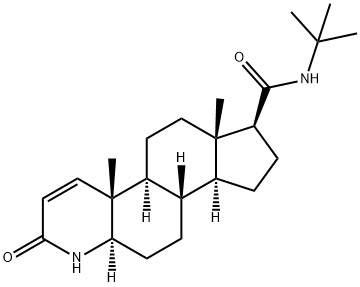
What is Finasteride?
Absorption
Finasteride is well absorbed following oral administration and displays a slow accumulation phase after multiple dosing.[lablel] In healthy male subjects receiving oral finasteride, the mean oral bioavailability was 65% for 1 mg finasteride and 63% for 5 mg finasteride, and the values ranged from 26 to 170% for 1 mg dose and from 34 to 108% for 5 mg dose, respectively. It is reported that food intake does not affect the oral bioavailability of the drug. The peak plasma concentrations (Cmax) averaged 37 ng/mL (range, 27-49 ng/mL) and was reached 1-2 hours post administration. The AUC(0-24 hr) was 53 ngxhr/mL (range, 20-154 ngxhr/mL). The plasma concentrations and AUC are reported to be higher in elderly male patients aged 70 years or older.
Toxicity
LD50
Oral LD50 is about 418 mg/kg in rats and there have been cases of lethality in rats receiving a single oral dose of 400 mg/kg in males and 1000 mg/kg in females.
Nonclinical toxicology
In a 24-month rat study, there were no signs of the tumorigenic potential of finasteride. In a 19-month carcinogenicity study in CD-1 mice, high doses of finasteride, at 1824 times the human exposure (250 mg/kg/day), resulted in an increase in the incidence of testicular Leydig cell adenomas and an increase in serum LH levels. In vitro mutagenesis assays demonstrated no evidence of mutagenicity. In an in vitro chromosome aberration assay, using Chinese hamster ovary cells, there was a slight increase in chromosome aberrations with much higher doses of finasteride.
Overdose
There were no reported significant adverse events in clinical trials of male patients receiving single oral doses of finasteride up to 400 mg and multiple doses of finasteride up to 80 mg/day for three months. As there have been no cases of overdose or clinically significant toxicity with finasteride, there are no specific recommendations in case of an overdose.
Significant adverse events
Common reproductive adverse events seen with finasteride therapy include erectile dysfunction, ejaculatory dysfunction, and loss of libido. These adverse events tend to disappear after discontinuation or chronic use of the drug. Only causal adverse event occurring at the male reproductive system that is caused by finasteride is decreased ejaculatory volume because of the predominant action of DHT on the prostate.
Special populations
Finasteride can be safely used in elderly patients or those with renal impairment with no specific dosing adjustment recommendations. Finasteride is indicated for male patients only, and it is advised that exposure to finasteride is avoided in pregnant women carrying male fetuses as it may lead to abnormal development of external genitalia in male fetuses.
Description
Finasteride, a novel 4-azasteroid, is a breakthrough in the treatment and control of benign prostatic hyperplasia. Mechanistically, it inhibits the prostatic-specific enzyme 5-alpha reductase, thereby decreasing the conversion of testosterone to dihydrotestosterone. It is reportedly effective in reducing urinary symptoms and prostatic volume and increasing maximal urinary flow rate. Finasteride is also being investigated as a treatment for prostatic cancer.
Description
Since 1997, finasteride has been marketed under many trade names (Propecia is the most prominent) for reversing the effects of male pattern hair loss. But before that—in 1992—it was approved by the US Food and Drug Administration for treating benign prostatic hyperplasia (enlarged prostate gland) and prostate cancer. In 2008, the Swedish Medical Academy advised users that finasteride may have persistent sexual side effects.
The Uses of Finasteride
Finasteride is an antialopecia agent that Inhibitor of 5α-reductase, the enzyme which converts testosterone to the more potent androgen, 5α-dihydrotestosterone. It is used to treatment of benign prostatic hyperplasia and androgenetic alopecia.
Background
Finasteride is a synthetic 4-azasteroid compound and specific inhibitor of steroid Type II 5α-reductase, which is an intracellular enzyme that converts the androgen testosterone into 5α-dihydrotestosterone (DHT). It works in a similar fashion as dutasteride, which is another 5-alpha-reductase inhibitor, by exerting antiandrogenic effects. Finasteride is an orally active drug that was first approved by the FDA in 1992 for the treatment of benign prostatic hyperplasia to improve symptoms and reduce the risk for acute urinary retention or the need for surgical procedures. In 1998, it was approved by the FDA to treat male pattern hair loss. Finasteride is commonly marketed under the brand names Propecia and Proscar to be used aloneo or in combination with doxazosin, an alpha-blocker.
Both benign prostatic hyperplasia and androgenic alopecia are androgen-dependent disorders that are characterized by in situ high levels of DHT. In the treatment of benign prostate hyperplasia, alpha-blockers such as tamsulosin and terazosin are also used. Compared to alpha-blockers that focus on providing the rapid relief of symptoms, 5α-reductase inhibitors aim to target the underlying disease by blocking the effects of the primary androgen involved in benign prostate hyperplasia and androgenic alopecia, thus reducing the risk for secondary complications while providing symptom control.
What are the applications of Application
Finasteride is an antiandrogen that inhibits 5α-Reductase 2
Indications
Finasteride is indicated for the treatment of symptomatic benign prostatic hyperplasia (BPH) in men with an enlarged prostate to improve symptoms, reduce the risk of acute urinary retention, and reduce the risk of the need for surgery including transurethral resection of the prostate (TURP) and prostatectomy. A combination product with tadalafil is also used for the symptomatic treatment of BPH for up to 26 weeks.
Finasteride is also indicated for the treatment of male pattern hair loss (androgenetic alopecia, hereditary alopecia, or common male baldness) in male patients.
Pharmacokinetics
Finasteride is an antiandrogenic compound that works by suppressing the production of serum and intraprostatic dihydrotestosterone (DHT) in men via inhibiting the enzyme responsible for the biosynthesis of DHT. The maximum effect of a rapid reduction in serum DHT concentration is expected to be observed 8 hours following administration of the first dose. In a single man receiving a single oral dose of 5 mg finasteride for up to 4 years, there was a reduction in the serum DHT concentrations by approximately 70% and the median circulating level of testosterone increased by approximately 10-20% within the physiologic range. In a double-blind, placebo-controlled study, finasteride reduced intraprostatic DHT level by 91.4% but finasteride is not expected to decrease the DHT levels to castrate levels since circulating testosterone is also converted to DHT by the type 1 isoenzyme expressed in other tissues. It is expected that DHT levels return to normal within 14 days upon discontinuation of the drug. In a study of male patients with benign prostatic hyperplasia prior to prostatectomy, the treatment with finasteride resulted in an approximate 80% lower DHT content was measured in prostatic tissue removed at surgery compared to placebo. While finasteride reduces the size of the prostate gland by 20%, this may not correlate well with improvement in symptoms. The effects of finasteride are reported to be more pronounced in male patients with enlarged prostates (>25 mL) who are at the greatest risk of disease progression.
In phase III clinical studies, oral administration of finasteride in male patients with male pattern hair loss promoted hair growth and prevented further hair loss by 66% and 83% of the subjects, respectively, which lasted during two years' treatment. The incidences of these effects in treatment groups were significantly higher than that of the group receiving a placebo. Following finasteride administration, the levels of DHT in the scalp skin was shown to be reduced by more than 60%, indicating that the DHT found in scalp is derived from both local DHT production and circulating DHT. The effect of finasteride on scalp DHT is likely seen because of its effect on both local follicular DHT levels as well as serum DHT levels.. There is evidence from early clinical observations and controlled studies that finasteride may reduce bleeding of prostatic origin.
Metabolism
Finasteride undergoes extensive hepatic metabolism predominantly mediated by the cytochrome P450 3A4 (CYP3A4) enzyme to form the t-butyl side chain monohydroxylated and monocarboxylic acid metabolites. Theses metabolites retain less than 20% of the pharmacological activity of the parent compound.
Properties of Finasteride
| Melting point: | 253 °C |
| Boiling point: | 576.6±50.0 °C(Predicted) |
| Density | 1.065±0.06 g/cm3(Predicted) |
| storage temp. | room temp |
| solubility | DMSO: 32 mg/mL, soluble |
| form | solid |
| color | white to beige |
| Water Solubility | insoluble |
Safety information for Finasteride
| Signal word | Danger |
| Pictogram(s) |
 Exclamation Mark Irritant GHS07  Health Hazard GHS08 |
| GHS Hazard Statements |
H302:Acute toxicity,oral |
| Precautionary Statement Codes |
P202:Do not handle until all safety precautions have been read and understood. P264:Wash hands thoroughly after handling. P264:Wash skin thouroughly after handling. P270:Do not eat, drink or smoke when using this product. P280:Wear protective gloves/protective clothing/eye protection/face protection. P301+P312:IF SWALLOWED: call a POISON CENTER or doctor/physician IF you feel unwell. P308+P313:IF exposed or concerned: Get medical advice/attention. |
Computed Descriptors for Finasteride
| InChIKey | DBEPLOCGEIEOCV-WSBQPABSSA-N |
Abamectin manufacturer
Swati Spentose Pvt Ltd
New Products
3-N-BOC-(S)-AMINO BUTYRONITRILE 4-Piperidinopiperidine 2-Methyl-4-nitrobenzoic acid 2-(4-bromophenyl)-2-methylpropanoic acid 4-Acetyl-2-methylbenzoicacid Acetyl-meldrum's acid Ethyl-4-Pyrazole carboxylate 2,6 Di acetylpyridine 2,6-Pyridinedimethanol 5,7-Dichloro-3H-Imidazo[4,5-B]Pyridine 5-Bromo-2-Methoxy-4-Methyl-3-Nitropyridine 2-Fluoro-5-Iodopyridine 2-Fluoro-5-Methylpyridine 2-Chloro-3-Bromo-5-Amiopyridine METHYL-4-(BUTYRYLAMINO)3-METHYL-5-NITROBENZOATE TRANS-CYCLOBUTANE-1,2- DICARBOXYLIC ACID 5-Nitro indazole R-(-)-5-(2-AMINO-PROPYL)-2-METHOXY-BENZENESULFONAMIDE 1,3-cyclohexanedione 4-Aminophenaethylalchol 3-NITRO-5-ACETYL IMINODIBENZYL (S)-(+)-4-BENZYL-2-OXAZOLIDINONE 4-FLUORO PHENYL MAGNESIUM BROMIDE 1.0 M IN THF 1-HYDROXY-4-METHYL6-(2,4,4-TRI METHYL PHENYL)-2-PYRIDONE MONO ETHANOL AMINE(PIROCTONE OLAMINE)Related products of tetrahydrofuran



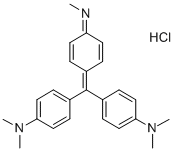


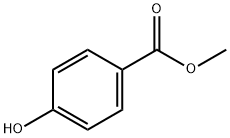
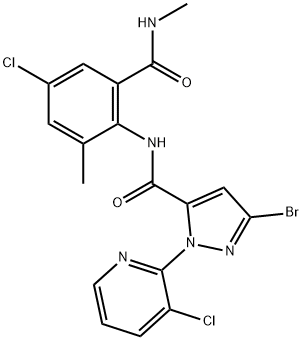
You may like
-
 FINASTERIDE 99%View Details
FINASTERIDE 99%View Details -
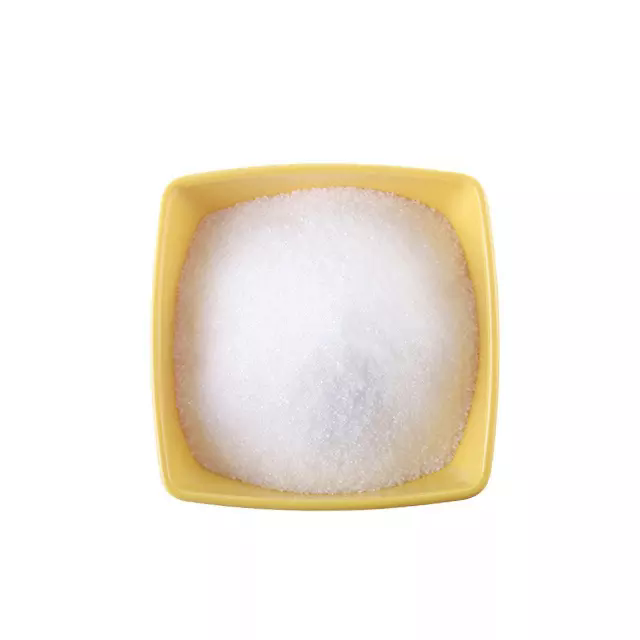 98319-26-7 98%View Details
98319-26-7 98%View Details
98319-26-7 -
 Finasteride 98%View Details
Finasteride 98%View Details
98319-26-7 -
 Finasteride 99%View Details
Finasteride 99%View Details -
 98319-26-7 98%View Details
98319-26-7 98%View Details
98319-26-7 -
 Finasteride 98%View Details
Finasteride 98%View Details
98319-26-7 -
 98319-26-7 98%View Details
98319-26-7 98%View Details
98319-26-7 -
 98319-26-7 Finasteride 98%View Details
98319-26-7 Finasteride 98%View Details
98319-26-7